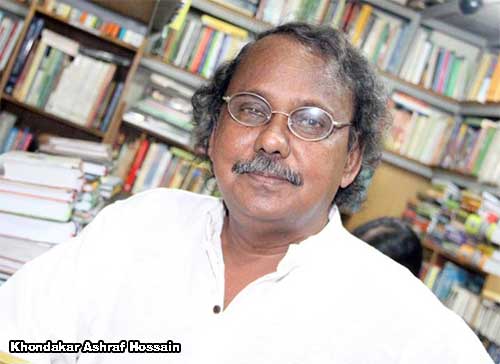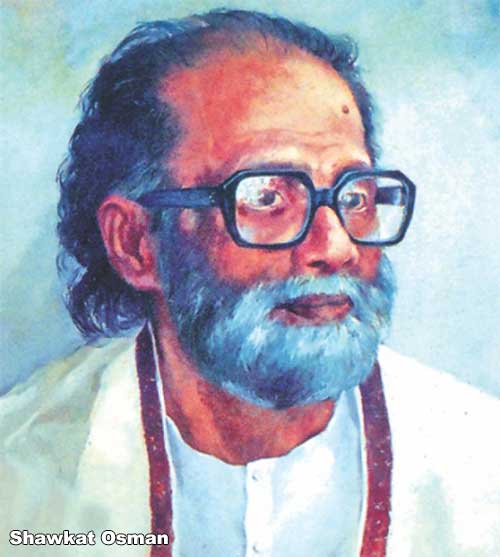
Zainul Abedin, often regarded as the father of modern art in Bangladesh, remains an enduring figure in the world of art. His remarkable ability to capture the essence of human life and its struggles, combined with his innovative techniques, has left an indelible mark on the global art scene. This article delves into Zainul Abedin's inspiring legacy, exploring his artistic journey, influences, and the profound impact he has had on contemporary art and culture.
Early Life and Artistic Beginnings
Born in 1914 in Kishoreganj, a district of present-day Bangladesh, Zainul Abedin exhibited an extraordinary talent for drawing from an early age. His rural upbringing amidst the picturesque landscapes of Bengal deeply influenced his artistic sensibilities. These early impressions of nature and rural life became recurring themes in his work, showcasing his connection to the land and its people.
In 1933, Zainul Abedin enrolled at the Government School of Art in Kolkata, where he honed his skills in various art forms. His academic training provided him with technical proficiency and exposure to a wide array of artistic traditions. During this period, his focus began to shift towards creating art that resonated with ordinary people's struggles.
The Famine Series: A Testament to Human Resilience
Zainul Abedin's "Famine Series" stands as one of his most iconic contributions to art. Created in response to the Bengal Famine of 1943, these works poignantly depict the suffering and resilience of famine-stricken individuals. His use of black ink on paper brought a stark and raw quality to the series, effectively conveying the despair and anguish of the time.
This series not only highlighted the social injustices of the famine but also established Zainul Abedin as a socially conscious artist. The emotional depth and realism of the "Famine Series" continue to be lauded for their ability to evoke empathy and awareness among viewers.
The Founding of the Institute of Fine Arts
Zainul Abedin's contributions extend beyond his artistic creations. He played a pivotal role in establishing the Institute of Fine Arts in Dhaka in 1948, which later became part of the University of Dhaka. This institution was instrumental in fostering a new generation of artists and promoting art education in Bangladesh.
As a visionary leader, Zainul Abedin emphasized the importance of preserving traditional art forms while encouraging innovation and experimentation. His efforts ensured that the institute became a hub for artistic excellence and cultural preservation.
Artistic Style and Influences
Zainul Abedin's art reflects a harmonious blend of realism and modernism. Influenced by the Bengal School of Art, his works often showcased an affinity for indigenous themes and techniques. At the same time, he drew inspiration from international art movements, incorporating elements of abstraction and expressionism into his compositions.
His versatility as an artist is evident in his wide-ranging subjects, from pastoral scenes to portraits and socially relevant themes. His ability to infuse emotion and narrative into his artwork made him a master storyteller through visual mediums.
Honoring Cultural Heritage
Zainul Abedin's commitment to cultural heritage was unwavering. He championed the preservation of folk art and crafts, recognizing their significance in Bangladesh's cultural identity. Through initiatives like the annual "Zainul Festival," he sought to celebrate and promote traditional art forms, ensuring their relevance in contemporary society.
His dedication to cultural heritage was further reflected in his involvement with various exhibitions and projects aimed at showcasing the richness of Bangladeshi art to the world.
Legacy and Global Recognition
Zainul Abedin's legacy is one of inspiration and empowerment. His art serves as a bridge between the past and present, preserving the essence of Bangladeshi culture while addressing universal themes. Over the years, his works have been exhibited in prestigious galleries and museums worldwide, earning him accolades and recognition on a global scale.
One notable aspect of his legacy is his influence on younger generations of artists. Many contemporary artists in Bangladesh and beyond cite Zainul Abedin as a major source of inspiration, crediting his pioneering spirit and dedication to art as key motivators in their creative journeys.
Syed Shamsul Haque Legendary Literary Icon
Zainul Abedin's artistic endeavors were not isolated; they often intersected with the works of literary and cultural icons like Syed Shamsul Haque, the legendary literary icon of Bangladesh. This collaboration and mutual inspiration among artists and writers enriched the country's cultural landscape, fostering a spirit of innovation and unity.
Preserving the Legacy
Efforts to preserve and promote Zainul Abedin's legacy continue to this day. Institutions, art collectors, and cultural organizations play a vital role in ensuring that his contributions are remembered and celebrated. Initiatives like retrospective exhibitions, academic research, and digital archiving contribute to keeping his work accessible to future generations.
Conclusion
Zainul Abedin's inspiring art legacy is a testament to the power of creativity and resilience. His ability to capture the essence of human experience through art has left an indelible impact on the world. From the harrowing depictions of the Bengal Famine to his efforts in fostering art education and preserving cultural heritage, Zainul Abedin remains a beacon of artistic excellence and social consciousness.
By honoring his legacy, we celebrate his contributions and draw inspiration from his unwavering commitment to art and humanity. Zainul Abedin's journey reminds us of the transformative power of art in shaping society and bridging cultural divides.
#ZainulAbedin #FamineSeries #InstituteOfFineArts





